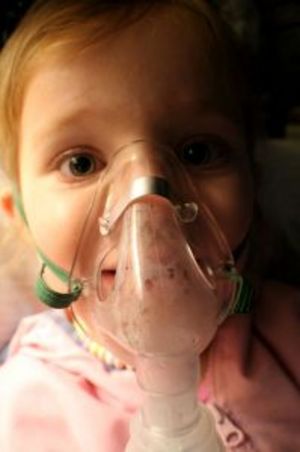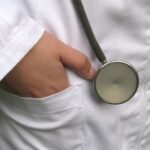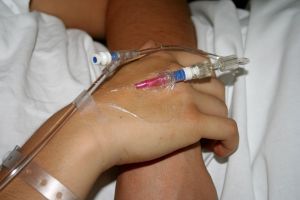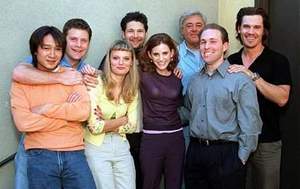Recently, my husband and I registered to become Bone Marrow donors. The process was simple, fast, and painless, but our half-hour errand could save a life.
This past summer, our neighbor’s six year old daughter and close friend of our children was diagnosed with Leukemia. Treatment has been swift and trying for the family, but not as effective as the young girl’s doctors, and her family especially, would like. After two months and several rounds of chemotherapy, her leukemia resisted remission, and so a determination was made that additional rounds of high-dose chemotherapy, full body radiation, and a bone marrow transplant over the winter are necessary.
Of course, this spurred in all of us an interest in bone marrow donation and joining a Bone Marrow Registry. The match for our little friend is yet to be found, but many preliminary bone marrow matches have been identified, and so her odds of finding an acceptable match are good. Nevertheless, when the family was presented with the opportunity to host a Bone Marrow Drive in their daughter’s honor in our community, they readily accepted and in just a few short weeks a drive was arranged at our local elementary school.
This particular Bone Marrow drive was organized and run by the Caitlin Raymond International Registry, housed by the University of Massachusetts Memorial Medical Center in Worcester, Massachusetts. There are many Bone Marrow donation registries in various locations in the United States and across the world. An internet search can help you find a donation site or bone marrow drive at a location near you.
The many bone marrow donation registries are linked together in a cooperative network to help match patients and donors near and far. This network provides patients with the closest (genetic) and most appropriate bone marrow match for the best chances of survival. For some bone marrow transplant patients, the vast worldwide registry network is their only chance for finding an acceptable bone marrow donor. Approximately three hundred registered patients search the worldwide network for unrelated bone marrow donors every month.
The registration process during the bone marrow drive was simple. Upon entering the bone marrow drive site, my husband and I were asked to look over a brief worksheet detailing medical conditions which rendered one ineligible for bone marrow donation. Certain chronic diseases, most cancers, diabetes and asthma requiring treatment more than twice weekly were among the conditions that precluded bone marrow registry and donation. High cholesterol and heart disease did not exclude donors from registering. Bone marrow donors between the ages of 16 (with parental consent) and 60 were eligible for bone marrow donation.
After the initial screening, all potential donors were asked to fill out a short medical questionnaire and consent form (approximately four or five pages, all told). At this bone marrow drive in Massachusetts, donors were asked to provide health insurance information as well. The state of Massachusetts has recently enacted legislation requiring most health insurance plans operating in the state to cover the cost of HLA testing for bone marrow donation. This is an important step for bone marrow donation registries, as limited funding to pay for testing has kept registration for willing donors low. Although this drive was funded through donations to cover the expenses of uninsured donors, not all bone marrow registries have adequate funding, and so donors may be asked to pay out of pocket to have their sample tested.
In the past, bone marrow donors were required to undergo a blood draw to provide a sample for HLA testing for bone marrow donation registration. This is still the case at some bone marrow donation centers, but for this drive, sampling consisted of pain free mouth swabs. Once screened by bone marrow registry personnel, additional registry workers instructed bone marrow donors in swabbing procedures. Two cotton swabs (like long Q-tips) were provided for each side of the mouth. Donors were to swallow, then rub the swabs individually up and down on the inside of the cheek. Bone marrow registry personnel collected the swabs, and the process was complete.
The entire process took about half an hour of our time. Most of that time was spent filling out the health questionnaire and insurance information, or waiting in line for our turn to be screened and donate our sample. It was a minuscule inconvenience that might just save the life of our little friend. If not her, possibly another waiting bone marrow transplant patient, another child, maybe some child’s mother or father, a stricken teen, a sister or a brother.
Minorities should note that there is a severe shortage in minority bone marrow donors. The best match for a given bone marrow transplant patient is usually found among a member of their own ethnic group, and so, there are many bone marrow transplant patients that go without donors because an acceptable match cannot be found. This extends to people of African-American heritage, but also Hispanic, Asian, Native American, descendants of Northern ethnic groups (such as native Alaskans), and peoples of mixed ethnicity as well. The problem is so severe that some bone marrow drives target only specific ethnic races in areas where concentrated populations of a given minority reside, turning away Caucasian donors.
To register as a potential bone marrow donor, you do not need to wait until a bone marrow drive is held in your area. Local bone marrow registries can be found on the internet, through your personal physician, or by calling a local hospital. Additionally, many registries allow the convenience of screening and signing up online. If you meet the health criteria of the screening process, a sample kit will be mailed from the bone marrow registry directly to you at home. You will be instructed to swab your mouth, as participants in this drive did, package the sample and return it to the bone marrow registry for testing. Depending on the center and their funding, testing fees may apply, however, registries work to the best of their ability to keep bone marrow donation testing free for potential donors. The Caitlin Raymond International Registry is one such registry that accepts screening online and will mail test kits to bone marrow donors. Their address on the web is www.crir.org, or email them at [email protected]
Reference:
- www.associatedcontent.com/article/94226/boy_with_leukemia_auctioned_advertising.html -Inspiring AC article




